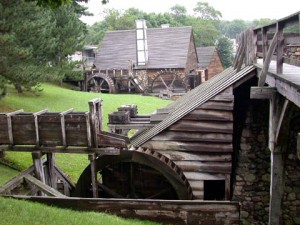 Here at C Marshall Metal Fabrication our conversations usually revolve around metal fabrication, plate rolls, angle rolls, ironworkers, and such. Just a hazard of the trade I guess.
Here at C Marshall Metal Fabrication our conversations usually revolve around metal fabrication, plate rolls, angle rolls, ironworkers, and such. Just a hazard of the trade I guess.
But back in the day, I did my fair share of woodworking as well along with general construction etc.
One job in particular on a church built in 1790 comes to mind. And as one thing leads to another in my mind, I find a direct relation to plate rolls and shears.
Bear with me.
Back in the early 90’s I was working on a church in Pelham, NH. The original ceiling and graded floor were works of art actually when looked through the eyes of a craftsman.
The ceiling had caved in and damaged the floors and pews, which of course had to be removed and replaced.
Well, when we removed the oak flooring we discover the lateral joists were attached to two large 4 foot by 4 foot beams that ran the length of the church from front to back. Carved directly out of two large trees these beams were impressive enough. But when we removed the lateral cross-floor joists (as required by the inspector), I noticed that the joists were lain in notches carved perfectly in the beams.
When I say perfectly, I mean seamlessly perfect and completely flush with the top surface of the beam making a completely smooth surface for the oak floorboards to lay upon.
I was surrounded by circular saws, miter saws, bubble levels, power planers, etc. With all of those tools at my disposal I realized the work that would be involved to do what those men had done. And I would have had to use every one of those tools plugged into various outlets along the floor.
And I still probably wouldn’t have gotten it as perfect as what I was looking at.
Then I realized that what these men did, they did in 1790…and without the use of my “advanced technology”.
It humbled me and then broke my heart as I had to remove every one of those painstakingly placed joists.
But as I did, I noticed the nails. The hand made nails made by a “Nailer”.
A nailer was a man who would make nails by hand with the use of iron bars that were cut to the correct size for the nailer to work on. The men who made these bars were called Slitters as they crafted slits in the bars for the nailer to fashion the nails in.
Then around the 1590’s in England, the Slitting Mill was introduced.
Now, the slitting mill was basically two pairs of rolls (sounds familiar) that were turned by water wheels. Mill bars were flat iron bars that were passed through the roll after heated in a furnace to form a plate. See where I’m going with this? Then the cutters slit it into rods of various lengths to make the rods for the nailer.
I know I am leaving a bunch of details out, but I’m sure you are familiar with them.
Bottom line is, the nails were made by hand until the early 19th century when manufactured cut nails, and eventually wire nails, were introduced in America, thus making extinct the lost art of the nailer.
I wonder if those slitters, nailers, and carpenters thought of themselves as artists like I do.
I wonder how many arts have been lost under the feet of advancing technology.
Hmmm…
Michael Graves
